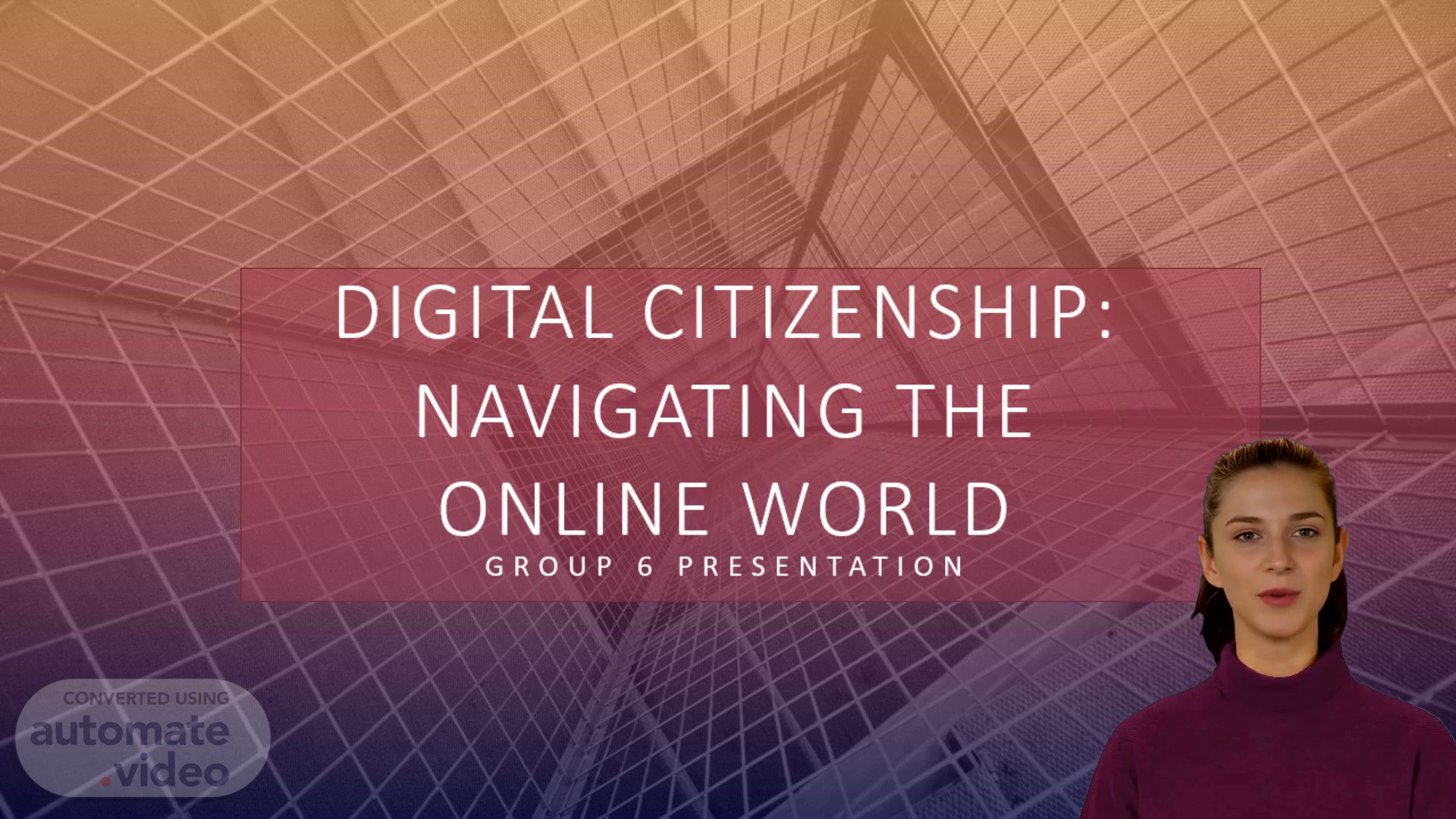
Digital citizenship: NAVIGATING THE ONLINE WORLD
Scene 1 (0s)
[Virtual Presenter] We will now move on to the next slide..
Scene 2 (6s)
[Audio] Our presentation will cover various aspects of digital citizenship including maintaining privacy and security responsible social media use and the impact of digital footprints. We will also discuss copyright and fair use guidelines. As digital citizens it is our responsibility to use online content responsibly and make informed decisions..
Scene 3 (30s)
[Audio] Our presentation will discuss responsible use of technology and navigating the digital world safely respectfully and with integrity. It is important for all individuals regardless of age or level of experience with technology to engage with society online and use technology responsibly to protect themselves and others. Our presentation will provide insights and strategies for maintaining digital citizenship in daily life. We will explore the benefits and risks of online engagement and discuss strategies for maintaining privacy and security..
Scene 4 (1m 4s)
[Audio] We will now explore the topics of digital citizenship including online etiquette privacy and security digital footprint and copyright and fair use. As we spend more and more of our lives online it is important to be aware of the advantages and risks of digital engagement. We aim to provide our audience with a deeper understanding of how to navigate the digital world in a responsible and ethical manner. Let's dive in and explore these topics together..
Scene 5 (1m 34s)
[Audio] We will discuss online etiquette responsible social media use privacy and security. Explore the digital landscape and learn how to navigate it with confidence and grace..
Scene 6 (1m 46s)
[Audio] Netiquette refers to ethical conduct and politeness standards for online behavior. This includes email message forums and video chats. Following these guidelines ensures a positive online experience for all individuals..
Scene 7 (2m 1s)
[Audio] The illustration portrays the differences between appropriate and inappropriate online behaviors. The graphic emphasizes that using polite language giving credit to sources providing constructive feedback and avoiding spammy behavior are examples of appropriate conduct. On the other hand engaging in trolling cyberbullying and spreading false information are examples of inappropriate behavior. It is crucial to recognize these behaviors and conduct ourselves appropriately in any online interaction..
Scene 8 (2m 33s)
[Audio] We must strive to be respectful courteous and considerate in all of our online interactions and take steps to protect ourselves and others from harm. We must be aware of the risks of cyberbullying online harassment and other forms of online abuse. Approaching all online interactions with respect empathy and a commitment to creating a positive online environment is the key to fostering a more inclusive and productive digital world. By doing so we can create a more positive and inclusive online environment..
Scene 9 (3m 6s)
[Audio] We've compiled some tips to help promote respectful and responsible online communication. It is essential to think before sharing consider the potential impact of our words and use proper language and tone especially when dealing with sensitive or controversial topics. Acknowledging cultural differences and diverse perspectives in our online interactions is also important and we should be open-minded and respectful of others' beliefs and opinions. When providing feedback online we should be constructive and focus on ideas rather than individuals providing specific actionable feedback that can improve conversations or ideas. Additionally using emoticons or emojis can help clarify tone and intention especially in written communication where tone can be easily misinterpreted. By following these tips we can create a culture of respectful and responsible online communication that benefits everyone involved..
Scene 10 (4m 4s)
[Audio] Protecting personal information online is crucial. It is important to be aware of the information we share online and to take necessary precautions to safeguard our privacy and security. We should always verify the authenticity of websites and sources before providing personal information use strong passwords and regularly update our software and devices to protect against potential threats. By taking these steps we can ensure that our personal information remains safe and secure online..
Scene 11 (4m 35s)
[Audio] Sharing personal information should be done with caution privacy settings should be configured individuals should be vigilant against phishing scams and secure connections should be used. This will help prevent identity theft fraud and other cybercrimes..
Scene 12 (4m 51s)
undefined. [Audio] Before sharing information about ourselves we should be cautious and think before we share. Consider the impact of our digital footprint and who we are sharing with..